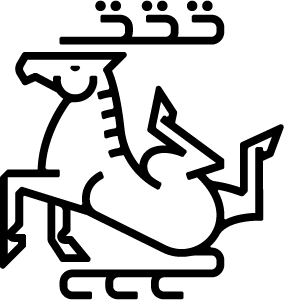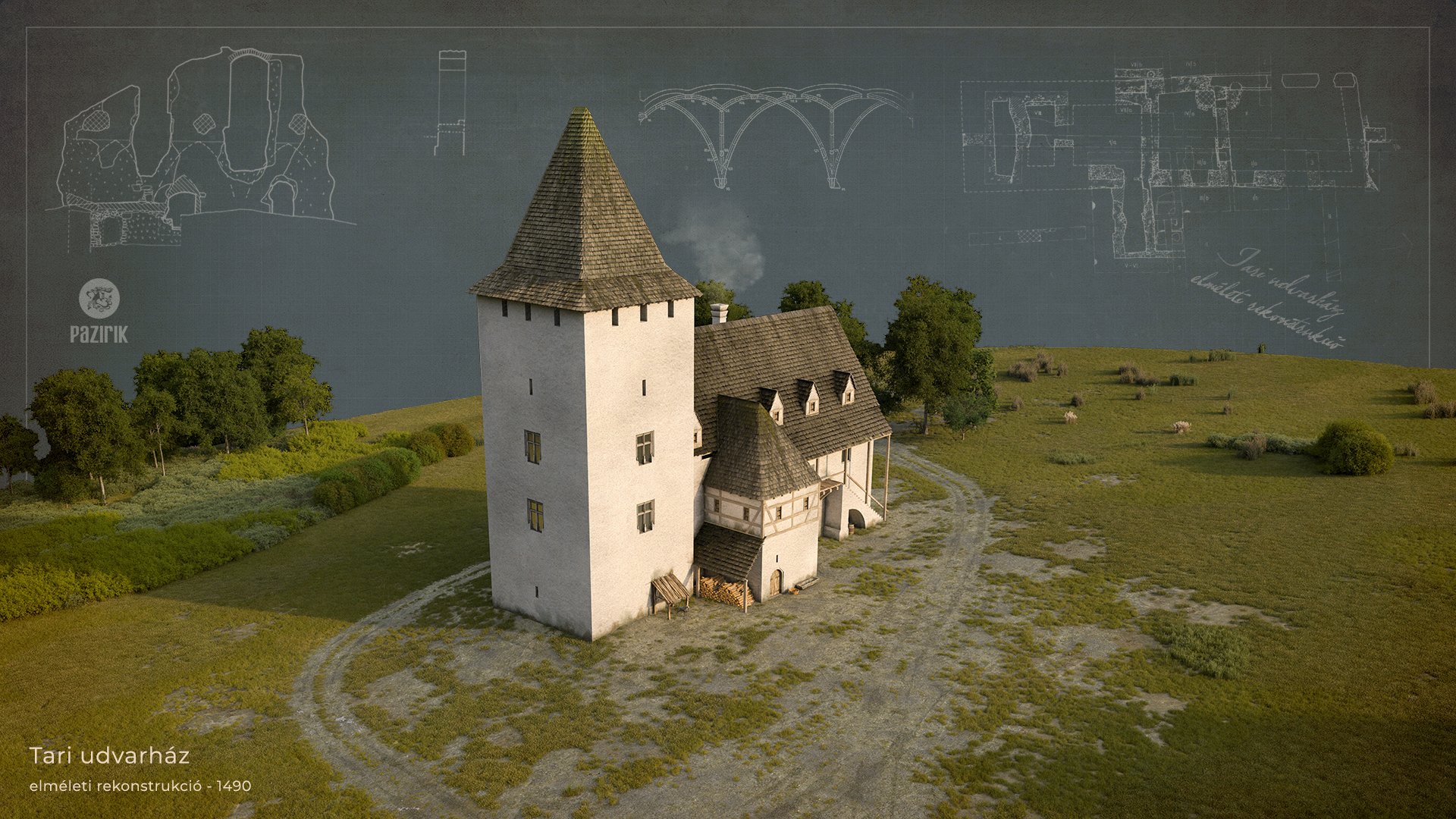
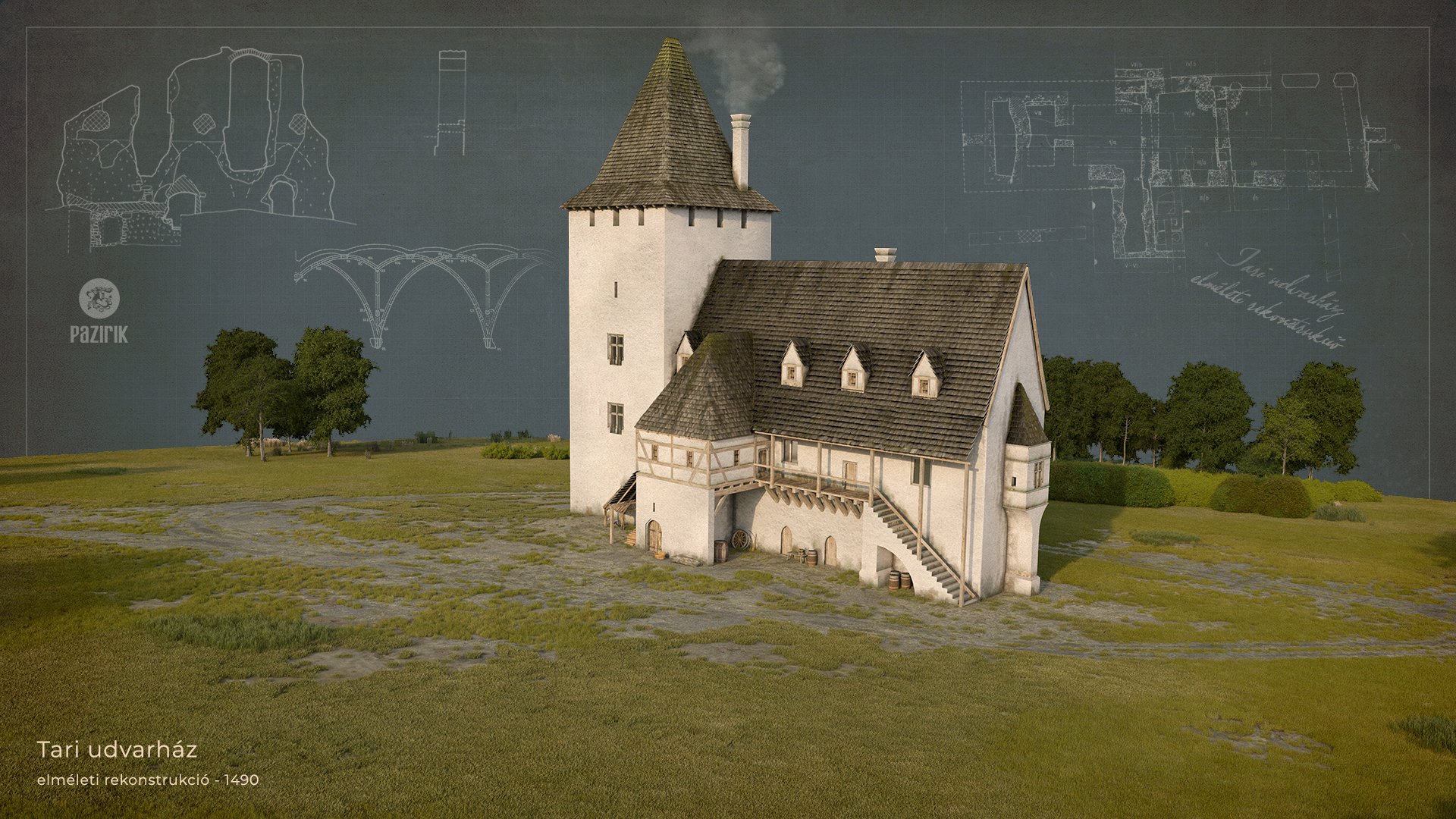
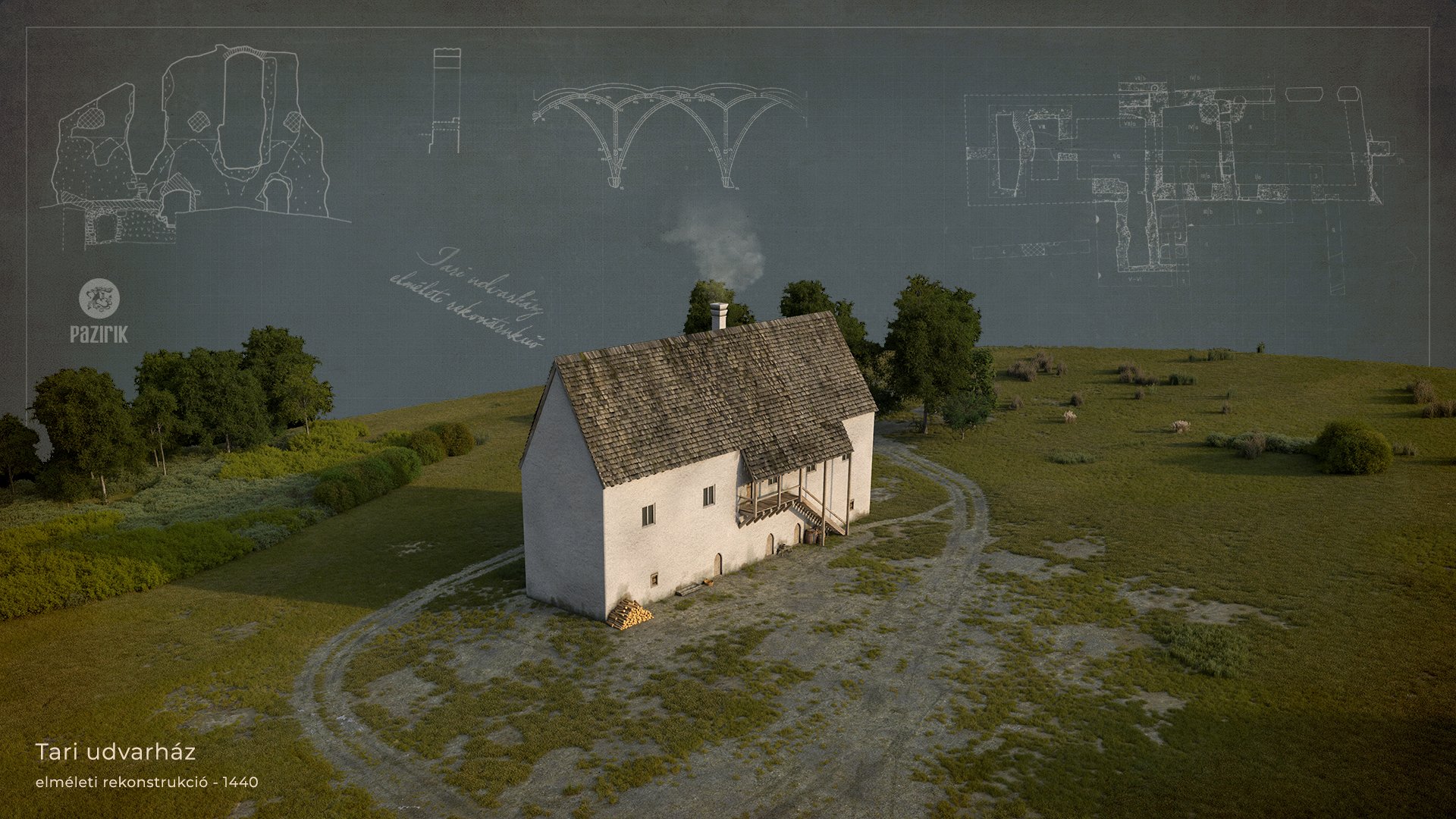
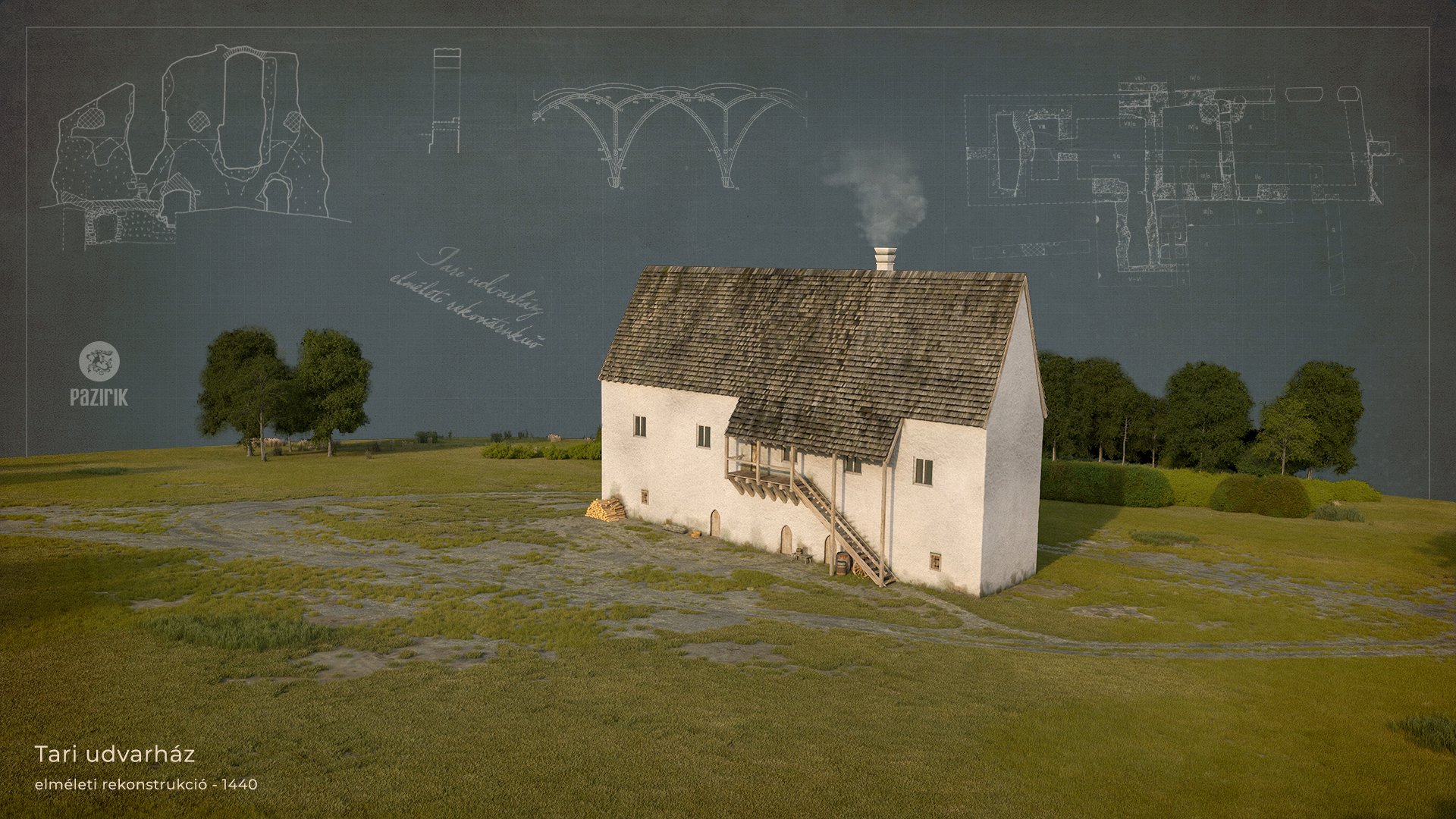
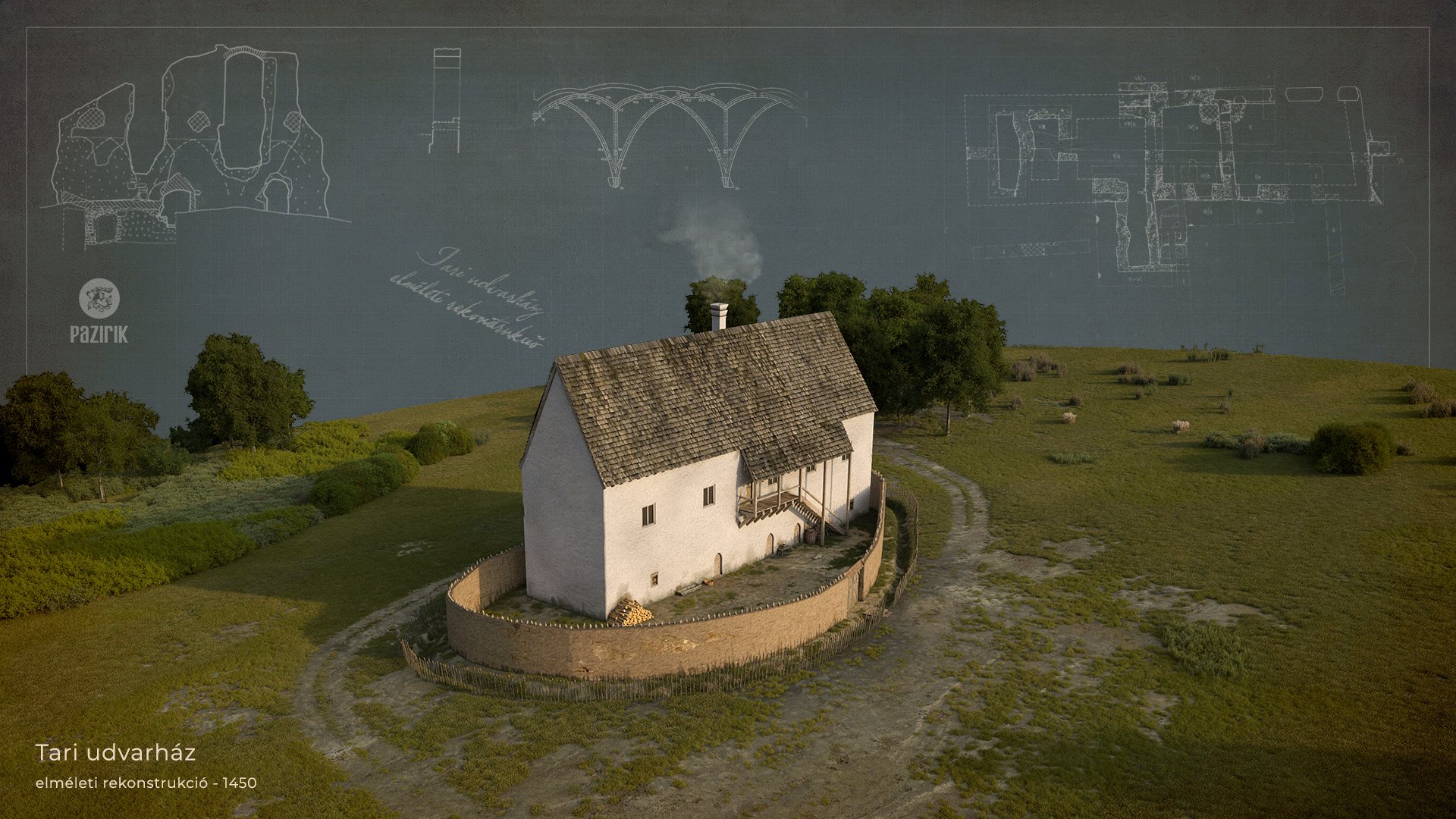
Tar – noble manor house on the fringe of the Mátra
It is located on the border of the Mátra and the Cserhát, in the central part of the Zagyva Valley, in the settlement of Tar, which has been inhabited since the Árpádian era. The medieval settlement stood on the border of today’s village, which was first mentioned in writing in the Váradi Regestrum in the 13th century. István Tari came from the sons of István Porc, who belongs to the Rátót genus. The small manor house no longer met the social rank of István’s grandson, Lőrinc, so he built a new, two-storey building in its place. He also rebuilt the nearby church. The manor house was probably reinforced by his son, Tari Ruppert, a party advocate of King Ulászló I, during the Civil War of the 1440s with an oval-shaped trench and palisade. In 1465, Lőrinc’s grandson, György, pledged his estates for 24,000 forints to his nephews, the Nánai Kompolt family and palatine Mihály Ország. The manor house was owned by the Guti Country family as early as 1465, first as a pledge and then as a heritage from 1472 until the second half of the 16th century. The construction of the late Middle Ages, during which, among other things, a cellar was dug under the southern half of the building and a tower was erected above it, it can certainly be connected to them, presumably in several stages until the 1510s. The ditch and the outer palisade probably no longer existed at this time. The slow destruction of the building certainly began with the area coming under Turkish rule after 1552. The building was last commemorated in 1569 as a ruined castle. The research of the building was carried out by Juan Cabello, the reconstruction was done according to the instructions of Gergely Buzás.
